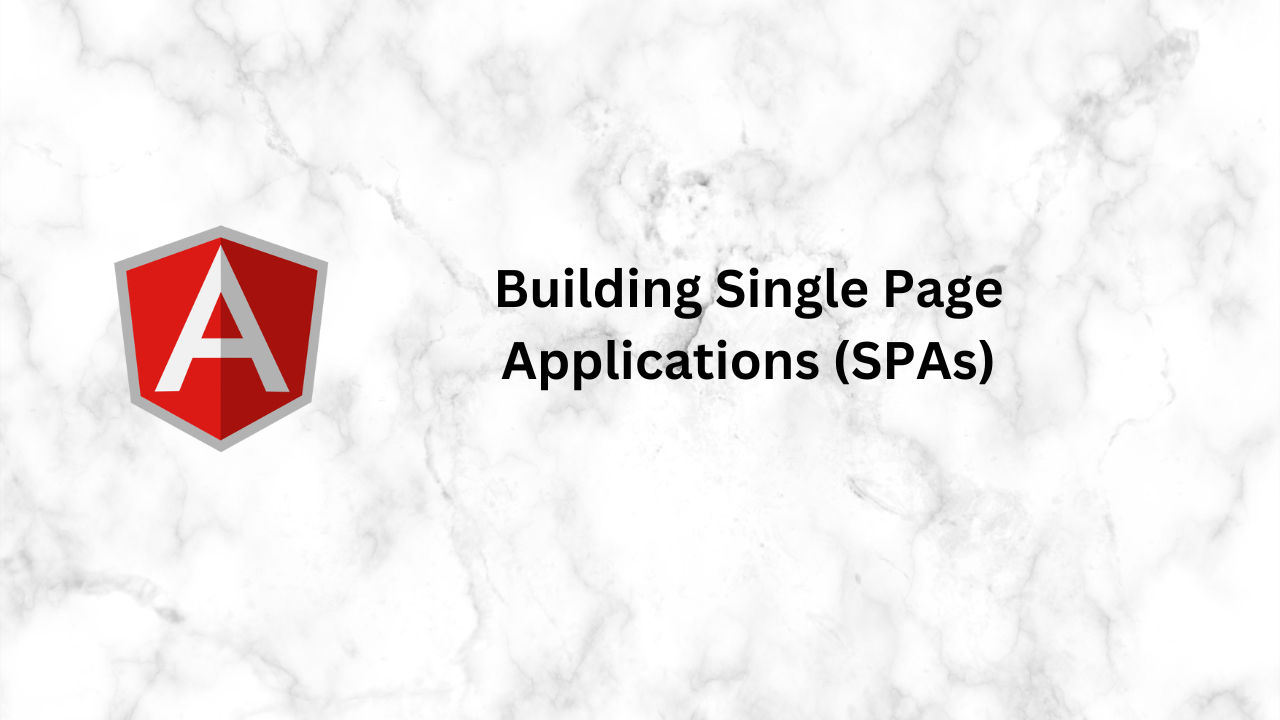“Master the art of building Single Page Applications (SPAs) with AngularJS. Explore features like two-way data binding, routing, directives, and modular architecture. Learn best practices, solve common challenges, and prepare for AngularJS interview questions with this comprehensive guide.”
Single Page Applications (SPAs) have revolutionized web development by offering a seamless and interactive user experience. AngularJS, a pioneering JavaScript framework developed by Google, has been instrumental in simplifying the creation of SPAs. In this blog, we will delve deep into the fundamentals of building SPAs using AngularJS, understand its core principles, and explore real-world applications, all while preparing for potential interview questions related to the topic.
Table of Contents
What Are Single Page Applications (SPAs)?
A Single Page Application (SPA) is a web application that dynamically loads content into a single HTML page. Unlike traditional web applications that reload the entire page for navigation, SPAs dynamically update parts of the page as users interact with the app. This approach significantly enhances the user experience by making it faster and more responsive.
Key characteristics of SPAs:
- Dynamic content loading: Content is fetched from the server via APIs and displayed without reloading the page.
- Improved performance: Reduced network requests and optimized rendering make SPAs fast.
- Enhanced user experience: Transitions between views feel seamless, like a desktop application.
Why Use AngularJS for SPAs?
AngularJS provides an excellent foundation for building SPAs due to its robust features and developer-friendly tools. Here’s why AngularJS is ideal for SPAs:
- Two-Way Data Binding: Synchronizes the data between the model and the view, ensuring consistent UI updates without manual DOM manipulation.
- Dependency Injection: Simplifies component interaction and enhances code modularity and testability.
- Routing and Navigation: With the
ngRoutemodule or third-party libraries likeui-router, AngularJS enables smooth navigation between views in SPAs. - Directives: Extend HTML functionality, making it easy to build reusable components.
- RESTful API Integration: Works seamlessly with backend APIs, fetching data dynamically to update the UI.
Step-by-Step Guide to Building an SPA with AngularJS
Let’s walk through building a simple SPA using AngularJS.
1. Setup and Initialization
First, include AngularJS in your project. You can download it from the official site or use a CDN:
<script src="https://ajax.googleapis.com/ajax/libs/angularjs/1.8.2/angular.min.js"></script>
Create an index.html file, the single entry point for your application:
<!DOCTYPE html>
<html ng-app="spaApp">
<head>
<title>My AngularJS SPA</title>
</head>
<body>
<div ng-view></div>
<script src="app.js"></script>
</body>
</html>
2. Configure Routing
Use the ngRoute module to define application routes. Install ngRoute and inject it into your AngularJS application.
app.js:
angular.module('spaApp', ['ngRoute'])
.config(function($routeProvider) {
$routeProvider
.when('/home', {
templateUrl: 'home.html',
controller: 'HomeController'
})
.when('/about', {
templateUrl: 'about.html',
controller: 'AboutController'
})
.otherwise({
redirectTo: '/home'
});
});
3. Create Views
Define HTML templates for each route:
home.html:
<h1>Welcome to the Home Page</h1>
<p>This is the main content of the SPA.</p>
about.html:
<h1>About Us</h1>
<p>Learn more about our application.</p>
4. Add Controllers
Controllers manage the data and logic for each view.
app.js (continued):
angular.module('spaApp')
.controller('HomeController', function($scope) {
$scope.message = 'Welcome to the Home Page!';
})
.controller('AboutController', function($scope) {
$scope.message = 'Here is some information about us.';
});
5. Style the SPA
Enhance the UI with CSS to make your SPA visually appealing:
body {
font-family: Arial, sans-serif;
}
h1 {
color: #3498db;
}
Best Practices for Building SPAs with AngularJS
- Modular Architecture: Break your app into reusable modules for easier maintenance.
- Lazy Loading: Load components and data only when required to optimize performance.
- Error Handling: Use
$httpinterceptors or custom error handlers to manage API errors gracefully. - Testing: Write unit and end-to-end tests using tools like Karma and Protractor.
- Code Organization: Maintain separate files for controllers, services, and views for scalability.
Common Challenges in Building SPAs and Solutions
- SEO Optimization:
SPAs often struggle with SEO because search engines might not index dynamically loaded content. Solution: Use server-side rendering (SSR) or tools like Prerender.io to make your content crawlable. - State Management:
Managing application state across views can become challenging in large SPAs. Solution: Use AngularJS services to share state across components. - Performance Issues:
Rendering large datasets can slow down the app. Solution: Implement pagination or infinite scrolling techniques. - Back Button Behavior:
Native browser navigation can break in SPAs. Solution: Use AngularJS’s$locationservice to manage the history stack effectively.
Interview Questions on AngularJS and SPAs
Basic Questions
- What is a Single Page Application (SPA)? How does AngularJS facilitate SPA development?
Answer: An SPA is a web application that loads a single HTML page and dynamically updates content without reloading the page. AngularJS facilitates SPA development through features like routing (ngRouteorui-router), two-way data binding, and dependency injection. - What is two-way data binding, and how does it work in AngularJS?
Answer: Two-way data binding synchronizes the model and view. Changes in the model automatically update the view, and user interactions with the view update the model.
Intermediate Questions
- How do you implement routing in AngularJS?
Answer: Routing in AngularJS is implemented using thengRoutemodule or third-party libraries likeui-router. Routes are defined in the$routeProviderconfiguration block. - What is the purpose of directives in AngularJS? Can you give an example?
Answer: Directives extend HTML by adding custom behavior. For example, theng-repeatdirective is used to loop over a collection in the view.
Advanced Questions
- What are the challenges of building SPAs, and how do you overcome them?
Answer: Challenges include SEO, state management, and performance issues. Solutions involve using SSR for SEO, AngularJS services for state management, and optimization techniques like lazy loading. - How does AngularJS handle dependency injection? Why is it important?
Answer: AngularJS uses dependency injection to manage services, controllers, and other components. It promotes modularity, reusability, and testability of the code.
Conclusion
AngularJS remains a solid choice for building SPAs, especially for small to medium-sized projects. Its features, such as two-way data binding, directives, and routing, make it easier for developers to create interactive and responsive web applications. While modern frameworks like Angular (2+) and React have gained popularity, AngularJS’s simplicity and effectiveness continue to make it a valuable tool for understanding SPA development.
Whether you’re preparing for an interview or building an AngularJS project, mastering these concepts will provide a strong foundation for front-end development. By focusing on practical implementations and best practices, you can ensure your SPAs are both functional and maintainable.
Master it, and you’ll unlock the full potential of AngularJS!
Happy coding!

